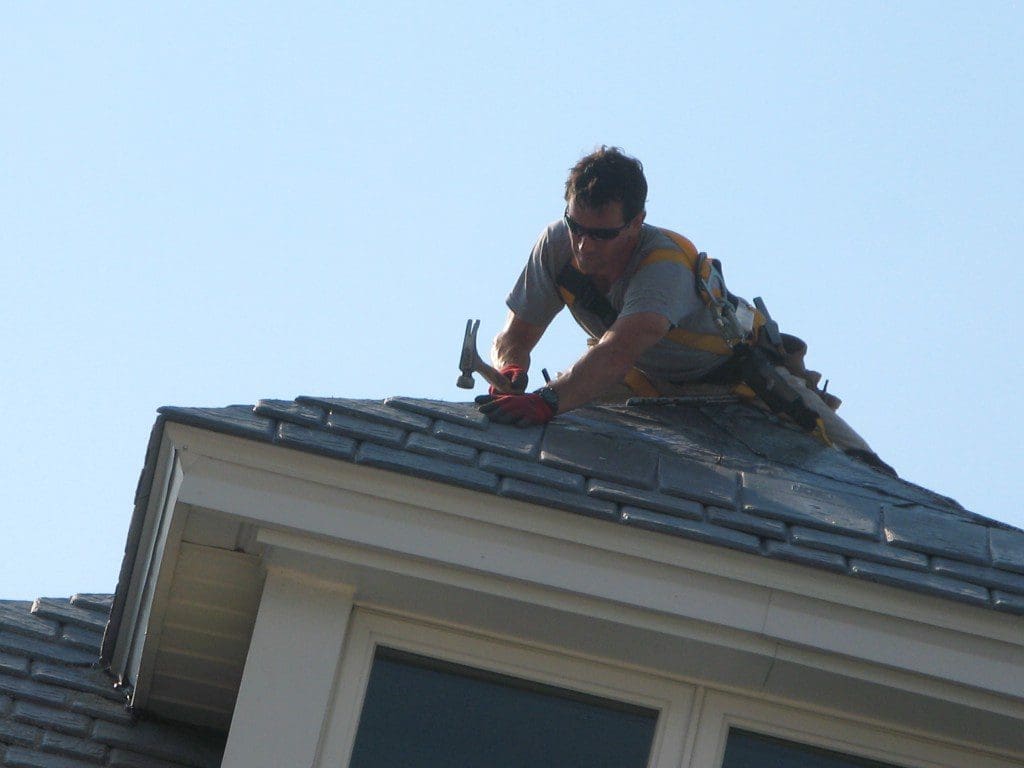Find Royale Home Improvements Roofers Near Me Totowa NJ
Find Royale Home Improvements Roofers Near Me Totowa NJ
Blog Article
The Ultimate Guide to Roofing Materials and Setup for Your Home Renovation Job
When getting started on a home improvement job, selecting the best roof covering materials and making sure a proper setup are critical steps that can dramatically impact the general quality and durability of your home. Keep tuned to uncover functional tips and understandings that will certainly direct you with the intricate globe of roofing materials and installation, making certain that your home enhancement job is a success.
Kinds Of Roofing Products
One preferred roof product is asphalt tiles, recognized for their cost and ease of setup. Steel roofings can hold up against rough weather problems and call for marginal upkeep. Furthermore, metal roof coverings are energy-efficient and eco friendly, making them a sustainable option for eco-conscious customers.
Wood tiles or trembles are a typical roofing material that gives a natural and rustic appearance to a home. Clay and concrete tiles are also prominent choices for roof products due to their longevity and fire resistance.
Elements to Consider When Selecting
When choosing roofing products for a building job, it is important to thoroughly consider numerous crucial elements to guarantee ideal efficiency and long life of the roofing system. Different roof materials have differing degrees of resistance to aspects such as wind, rain, snow, and sunshine.
An additional factor to think about is the incline of the roof covering. Some roof covering materials are better suited for steep roofings, while others function well on level or low-sloped frameworks. The incline affects how water drains off the roofing and how the materials will carry out over time.
Do It Yourself Vs Specialist Installment
Taking into consideration the important elements that influence the selection of roof materials, the choice between Do it yourself and expert installation plays a substantial duty in making sure the structural honesty and durability of the roofing system. While some homeowners might opt for a do-it-yourself strategy to save on prices, it's vital to recognize the intricacies and risks entailed in installing a roof covering.

Step-by-Step Roof Installation Process
Beginning an exact and well-executed roofing setup process is fundamental to guaranteeing the longevity and efficiency of the roof system. The initial step in the roof covering installment procedure is to prepare the roof covering deck by guaranteeing it is tidy, completely dry, and without any debris. Next off, underlayment is put on give an added layer of security against water infiltration. Following this, the installation of the drip side, starter tiles, and blinking is crucial to avoid water infiltration at weak spots such as the sides and valleys of the roofing.
Ridge vents, ridge caps, and any kind of added roof accessories are installed to guarantee appropriate air flow and a refined look. Routine examinations and upkeep adhering to the setup procedure are advised to extend the lifespan of the roofing system.
Maintenance and Care Tips
To ensure the longevity and optimal efficiency of your roofing, regular upkeep and care are important. One crucial facet of roofing system upkeep is checking the roofing system at the very least twice a year, preferably in the spring and loss, to inspect for any indicators of damage, such as missing out on roof shingles, splits, or leaks.
Along with visual inspections, it is a good idea to schedule expert roof assessments every few years to examine the total condition of the roof covering and identify any type of underlying issues that may not be quickly visible. Routine upkeep tasks, such as cleaning up the seamless gutters, trimming overhanging branches, and getting rid of moss or algae growth, can assist expand the lifespan of your roofing system and guarantee it proceeds to safeguard your home properly. By investing time and effort right into correct maintenance, you can extend the life of your roof covering and avoid unnecessary fixings or replacements.
Conclusion

Report this page